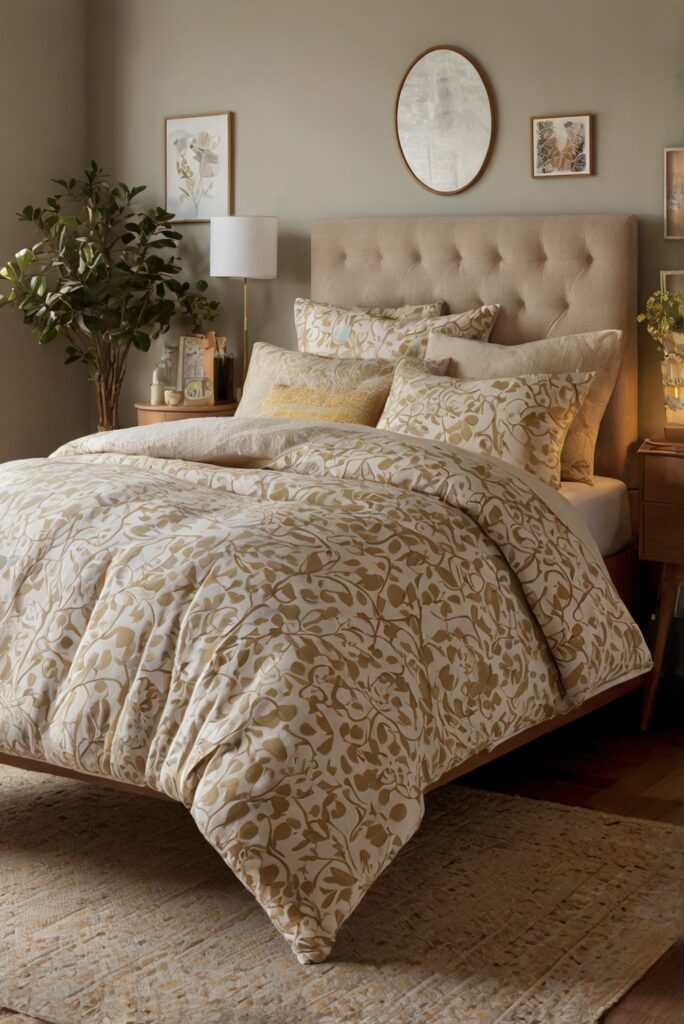Discover essential tips for selecting bedding for allergy sufferers in this daily routine post filled with expert advice on creating allergen-free and stylish spaces.
The top tips for choosing bedding for allergy sufferers include selecting hypoallergenic materials such as organic cotton or bamboo, using allergen-proof covers for pillows and mattresses, regularly washing bedding in hot water, and avoiding down-filled comforters or pillows. Additionally, opting for light and breathable fabrics can help prevent allergens from accumulating. For a more organized approach, create a cleaning schedule for washing bedding and invest in a high-quality vacuum cleaner with a HEPA filter to reduce dust mites and pet dander in the bedroom. These steps can significantly improve the indoor air quality and promote better sleep for allergy sufferers.
What to Look for in Bedding for Allergy Sufferers
When choosing bedding for allergy sufferers, **it is important to pay attention to certain key factors**. Opt for bedding that is **hypoallergenic**, which means it is less likely to cause allergic reactions. Look for bedding that is made of **natural materials**, such as cotton or bamboo, as these are less likely to harbor allergens. Additionally, choose bedding that is **easy to clean**, as regular washing can help remove allergens such as dust mites.
Material Matters
The type of material used in bedding can **make a significant difference** for allergy sufferers. **Cotton** is a popular choice for bedding as it is **breathable** and **less likely to trap allergens**. **Bamboo** is another great option as it is **naturally hypoallergenic** and **resistant to dust mites**. **Silk** is also a good choice for allergy sufferers as it is **smooth and less likely to collect allergens**. **Avoid materials like wool or down**, as they can **trigger allergies** in some individuals.
Importance of Dust Mite Covers
**Dust mites** are a common allergen that can be found in bedding. **Investing in dust mite covers** for your pillows, mattress, and duvet can **help create a barrier** between you and these allergens. Look for covers that are **made of tightly woven fabric** to prevent dust mites from getting through. Regularly washing these covers in **hot water** can also help kill any dust mites that may be present.
The Role of Washing Frequency
**Regular washing** of bedding is crucial for allergy sufferers. **Wash your bedding** in **hot water** at least once a week to **kill dust mites** and **remove allergens**. Use a **gentle detergent** that is **fragrance-free** and **designed for sensitive skin**. **Avoid fabric softeners** as they can leave behind residue that may aggravate allergies. **Drying your bedding** in a **hot dryer** can also help **kill any remaining allergens**.
Consideration for Pillow and Mattress Fill
When selecting pillows and mattresses for allergy sufferers, **pay attention to the fill material**. **Opt for hypoallergenic options** such as **latex** or **memory foam**, which are **less likely to harbor allergens**. **Avoid down or feather fills**, as these can **trigger allergies** in some individuals. **Regularly fluff and air out** your pillows and mattress to help **reduce allergen buildup**.
In conclusion, when choosing bedding for allergy sufferers, it is important to prioritize materials that are hypoallergenic, easy to clean, and resistant to allergens such as dust mites. Investing in dust mite covers and washing bedding regularly in hot water can help create a healthier sleeping environment for those with allergies. By paying attention to these key factors and making informed choices, allergy sufferers can enjoy a more comfortable and restful night’s sleep.
1. Material Matters:
When selecting bedding for allergy sufferers, opt for hypoallergenic materials such as tightly woven fabrics like cotton, silk, or microfiber. These materials are less likely to trap allergens like dust mites, pet dander, or pollen, reducing the risk of allergic reactions.
2. Dust Mite Defense:
To combat dust mites, consider using dust mite-proof covers on pillows, mattresses, and comforters. These covers create a barrier that prevents dust mites from infiltrating your bedding, thus decreasing allergy symptoms.
3. Easy to Clean:
Choose bedding that is easy to wash frequently in hot water to remove allergens effectively. Regularly washing your bedding at high temperatures helps eliminate dust mites and other triggers that can exacerbate allergies.
4. Allergy Testing:
If you are unsure about specific allergens that trigger your reactions, consider undergoing allergy testing. Identifying the allergens allows you to select bedding that caters to your specific needs, minimizing allergic responses.
5. Certified Products:
Look for bedding products certified by organizations like the Asthma and Allergy Foundation of America (AAFA) or Oeko-Tex Standard 100. These certifications ensure that the bedding has undergone testing for allergens and harmful substances, providing peace of mind for allergy sufferers.

